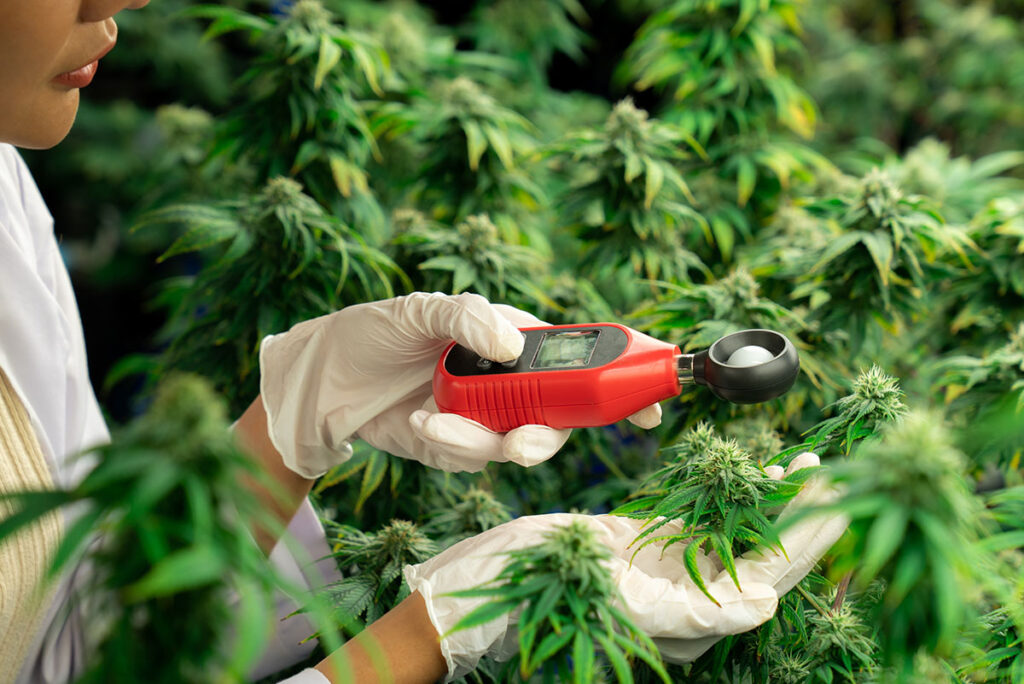Humidity Control in Cannabis Facilities

Cannabis thrives in mid-to-high humidity environments, with ideal humidity levels for cannabis ranging between 55-75% relative humidity, depending on strain, temperature, and stage of the growth cycle. When growing cannabis indoors, it is important to simulate the conditions of its native climate as much as possible, while also making timely adjustments to parameters to elicit the highest yielding and best quality response from the plant.
However, it is critical to prevent humidity levels from rising too high, especially during the vulnerable weeks of dense bud production during the second half of flower. This can be achieved by maintaining a balance between air conditioning, the heat that lights and other equipment give off, the transpiration rates of the plants, and the amounts of water being introduced to the grow space. Dehumidifiers should be incorporated into the mechanical design, depending on the situation.
A dehumidifier is a piece of equipment that removes excess moisture from the air. It is specifically designed to handle the unique challenges of indoor cultivation humidity control. Most cannabis cultivators use condensing dehumidifiers. These units use a fan to intake moist air from the grow space, and then, as it passes through its cooling coils, the air cools below what is called the “dew point temperature” of the room.
Once the air temperature is reduced to the dew point temperature, moisture is “wrung out,” causing the water to be released as water droplets, which form on the coil. The air is returned to the room, and the water is drained away. Every unit is different and will be rated for certain temperature and humidity parameters. Improper installation can lead to leaks and machine malfunctions, so it’s important to use an installer with experience with dehumidifiers.
While virtually all sealed cultivation environments require some form of dehumidification, not all growers use standalone dehumidifiers. Some climate systems come with dehumidifying capabilities built-in. Standalone units offer separate humidity control and operate independently from your cooling system. They range dramatically in size, with commercial dehumidifiers ranging from less than 100 PPD (pints per day) to over 700 PPD. They also vary in energy consumption and quality. Because these systems use separate units to achieve cooling and dehumidification, each with their own compressors and cooling coils that require electricity to function, standalone systems tend to require more electrical infrastructure than an integrated system. HVACD technology approaches that generally rely on standalone dehumidification include DX (Direct Expansion) air conditioning units and 2-pipe chilled water systems.
On the other hand, the major benefits of integrated dehumidification are lower electrical infrastructure, which makes it more energy efficient than standalone units. Integrated systems also require less space and offer easier control over the environment. It is important to consider the different factors before deciding which route to take for your cannabis cultivation.